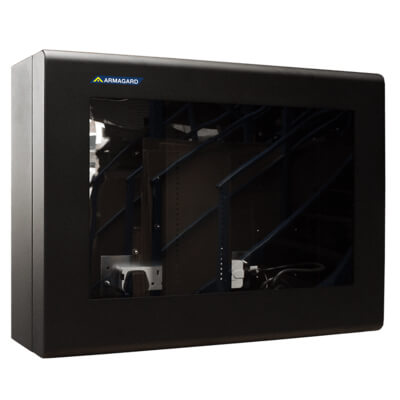Choosing a Screen for your Outdoor TV Enclosure
Posted by: Richard Williams | Posted on: | 0 Comments
Plasma and LCD enclosures come in a variety of sizes, suitable for all the popular sizes of TV screen. Being waterproof and able to withstand impacts, LCD and plasma enclosures provide the ideal solution for using a TV outdoors. Whether it is for outdoor digital signage, information screens, or a TV for outside a bar, an LCD or plasma enclosure will keep the TV protected.
Besides their ability to keep a screen protected, and provide a stable operating temperature inside the enclosure that ensure the optimum conditions for running a flat screen TV in almost any environment, LCD and plasma enclosures can house almost any make and model of modern TV. But choosing what type of screen to go inside an enclosure can depend on the purpose you want the screen to fulfil.

LCD and plasma enclosures come in a variety of sizes
Plasma or LCD
Most out of home screens, whether they are used for digital signage, information screens or providing entertainment outside a bar, or at home in the back yard, are LCDs. This is because plasma screens come with several disadvantages. Firstly, plasmas tend to be heavier and bulkier than LCDs, and are often more expensive too. Secondly, plasmas tend to suffer from problems of screen burn, where hotspots develop due to prolonged use of static images, permanently scarring the screen; however, most modern plasmas are less susceptible to this problem.
Plasma screens do have a higher contrast ratio though, providing better image quality and a wider viewing angle. This makes them more suited to outdoor use, especially for digital signage where the stark contrast and viewing angle are more important.
Screen Size
Indoor digital signage screens predominately use the most common LCD sizes: 32”, 36”, 42” and 46”. However, for outdoor areas, especially for digital signage, larger screens are more preferable. Outdoor digital signage tends to be viewed from farther away than indoor screens, and because of all the other distractions in outdoor areas, larger screen sizes work best. LCD and plasma enclosures come in all sorts of sizes right up to 70”.
Other Considerations
Sunlight can cause outdoor screens problems due to its level of brightness. On a bright, sunny day, outdoor screens can become unreadable. For this reason, high brightness screens are better suited for outdoor applications. These typically have a brightness three times greater than standard screens, enough to cope with even the brightest of days.
Post shortlink:
Popular Products
LCD Enclosure
Need armor for your LCD/LED screen(s)? Outdoors or inside the versatile LCD enclosure protects against thieves, vandals & the weather. Installation idea: NFL stadiums.
Outdoor Digital Signage
Exclusive 46” outdoor screen protection. Dubbed the ‘Totem’, due to its distinct design, it repels damage threats, but attracts audiences. Installation idea: Drive-thru restaurants.
Portrait Flat Panel Enclosure
Safeguard your eye-level advertising display screen(s), indoors or outdoors. Completely customizable, add exciting features like touch screen technology. Installation idea: Restaurant frontages.
Indoor Digital Signage
Popular purchase for retail outlets! Great for ‘point of sale’ persuasion, boost your brand with static & motion advertising from a single unit! Installation idea: Mall of America.




